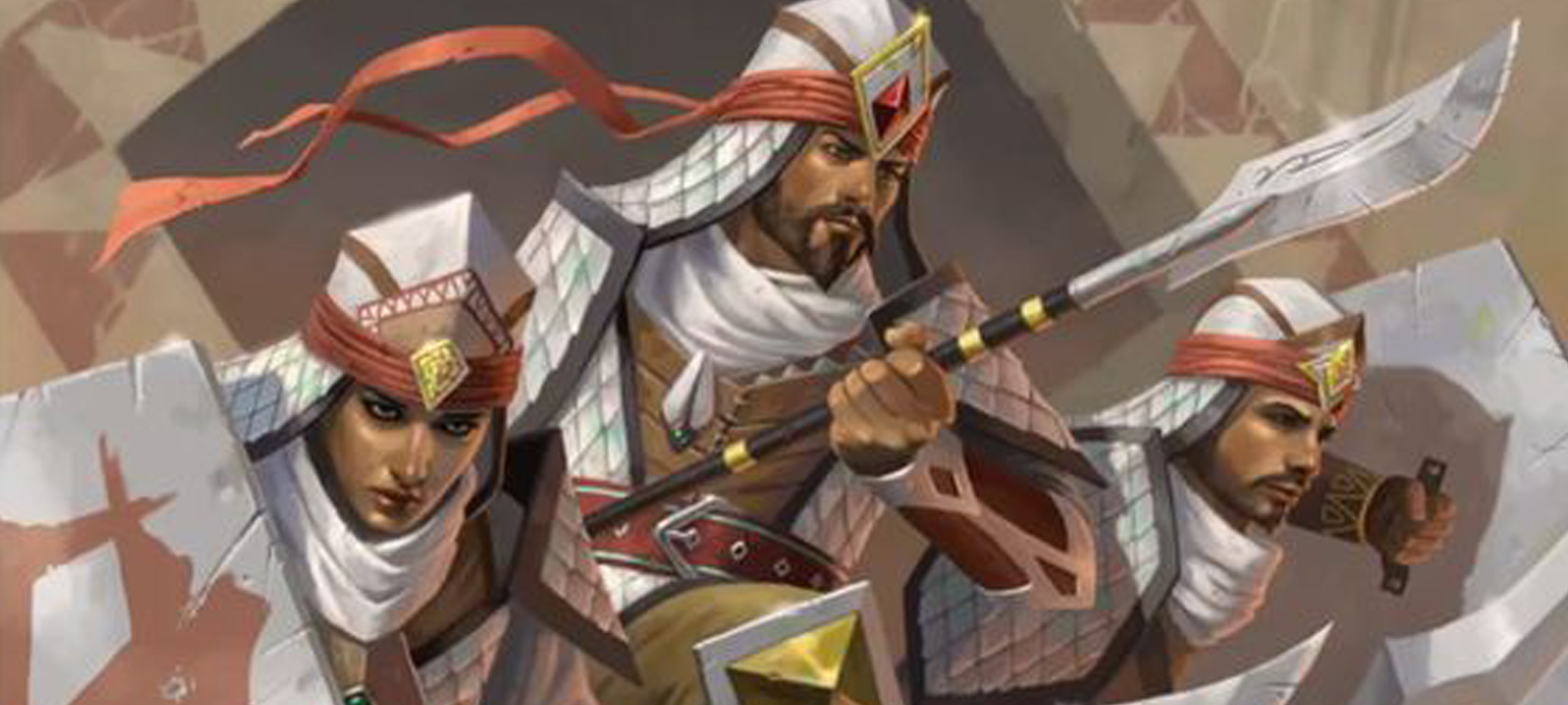Houses of Kahel
The Houses of Kahel are a coalition of elven merchant houses that live and do business on and around the Kaheli Sandsea. They are a people that understand that the world is a brutal place, and that to survive in it, they must be able to rely on and trust the people around them. Duty and family have consequently become the mainstays of Kaheli society.
Kaheli culture is built around surviving the hardship of living in the desert of the sandsea.
Above all, the Houses value family. Family is the institution that has allowed them to persist and even thrive. The level of trust that members of the clan have for one another is typically linked to closeness of blood. Betrayals of such trust can result in a ritual disowning, where both parties shed blood into a fire. By contrast, if a clan member refers to another clan member as sister or brother, it is a mark of high esteem.
Family tree and ancestral spirits. Due to the scarcity of resources even in the oases, each Kaheli family is responsible for caring for a particular fruit-bearing tree, called a kin tree. The firstborn child becomes a tree warden, or caretaker, while the other children may become soldiers, merchants, or artisans, and will plant trees of their own with the seeds of their parents' tree when they start families. When family members die, they are laid to rest beneath their family tree without a casket. Their bodies provide nutrients for the tree, which in turn bear fruit for future generations. Instead of headstones, family names are carved directly into the kin tree. This concept reflects the Kaheli ideal of duty to the family. In fact, the spirits of the dead are closely connected to their trees, and can be called upon in times of war.
War strategists. The Kaheli are known as adept war strategists. They believe that most of a battle is fought before the armies engage in the field. Disciplined soldiers, high walls, and ample supplies will win the day. The Kaheli value the ability to choose the site of a battle to optimize their strengths, and will often forego pursuit of the enemy after victory in favor of holding strategic ground. However, they have learned to turn losing situations to their advantage and are known for using the harsh desert terrain as a weapon. Many Kaheli generals have led an enemy army into the sandsea, where the desert ultimately claimed victory.
Clan Structure
The Houses of Kahel are made up of a web of interconnected families, each of which is ruled by its oldest member. To an outsider, the houses may look like a unified entity. In reality, the organization of the Houses of Kahel is dynamic, with families maneuvering politically to form bonds with some families while trying to isolate others. That being said, the houses are all too aware that disunity can allow them to fall prey to other clans. They select a leader to organize the clan's defenses and lead the army in times of war. Each family is responsible for providing soldiers for the greater Kaheli army.
Familial relationships:
Blood-Kin. Family members who are directly related by blood, no matter how distantly.
Bond-Kin. Family members linked by oaths ("You are like a sister to me"). Krumar (see below) fall into this category.
Clan orphans. Kaheli members who have no family but are still part of the clan. Orphans can be adopted by families.
Disowned. These are individuals who have been ritually disowned. By law, they cannot be adopted. There are colonies of disowned outside Kaheli settlements. Some disowned become wanderers, adventurers, or mercenaries.
Krumar. As the Kaheli wage war, they create many orphans among their enemies. Krumar are the orphaned children of enemy clans taken by the Kaheli to be raised as soldiers. The taking of krumar is a tradition that dates back to the days when the Kaheli were raiders, and it remains a strong institution to this day. Krumar taken by a Kaheli must by law be treated as bond-kin, and many krumar have been adopted by the families they are bound to protect. Many orcs have joined the Kaheli as krumar.
Spirit speaking. Kaheli human magic revolves around ancestor worship, which is connected to the Kaheli reverence for trees. Each family kin tree is a hub for its ancestors' spirits. Some among the Kaheli have learned to communicate with these spirits, and even call them forth to either protect their descendants or harm their enemies. The Kaheli have discovered that amber, tree resin, and sap aid in spirit magic. Amber wards are found in Kaheli homes and Kaheli soldiers carry amber with them to war. Spirit speakers consume distilled tree resin to help them connect to spirits. Weapons made from the wood of fallen kin trees are said to be blessed.
Clan roles:
- Dragonscale are heavy infantry who make up the bulk of the Kaheli army. These are troop levies pulled from Kaheli families. They carry dragonscale shields.
- Ibex cavalry are the heavy cavalry, or cataphracts, of the Kaheli. They wield both lance and bow, and they ride on war ibexes.
- Krumar orcs were taken from orc families and raised to be house guards for the Kaheli . They are treated as family, and many orc families live in Kaheli settlements. In times of war, they serve as shock troops.
- Scouts are adept information gatherers and are often deployed to harass enemy troop movements.
- Tree wardens are perhaps the most skilled warriors. It is their singular task to protect their family's kin tree at all costs.
- Spirit speakers summon and channel ancestral spirits.
Remove these ads. Join the Worldbuilders Guild


Comments